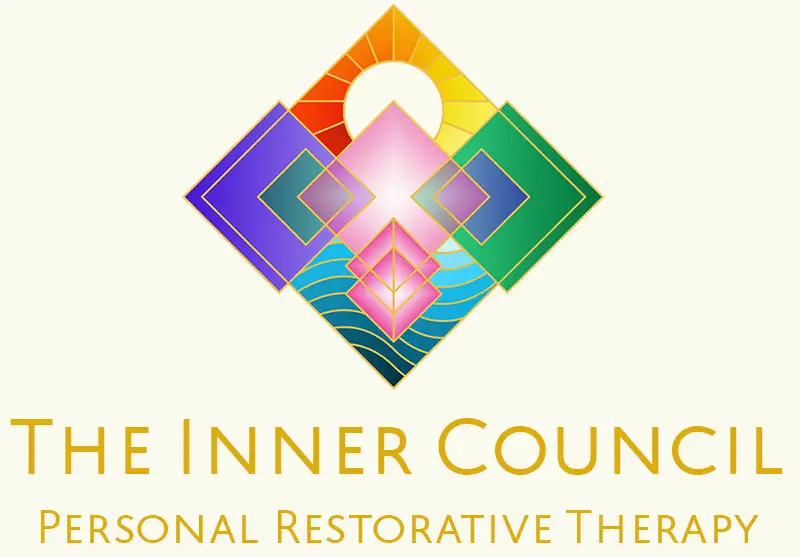BOOK YOUR WORKSHOP TODAY
All posts published here are presented as casual conversation pieces to provoke thought in some direction or another, they do not necessarily represent fixed opinions of the Inner Council, as our work exists beyond the spectrum of bound statement and singular clause.
Self-Reparenting: Understanding the Inner Child and Becoming the Parent You Needed
Re-parenting is one of the most transformative aspects of inner child work. At its core, self-reparenting means becoming the steady, responsible, nurturing adult that your younger self needed, but may not have consistently received. It is a conscious practice of meeting emotional, psychological, and sometimes physical needs that were once overlooked, dismissed, or left unmet. Through this relationship, the inner child learns that the present is safer than the past, and the adult self learns compassion, accountability, and emotional maturity.
Many people find the idea strange at first. Speaking inwardly to a younger version of yourself, offering comfort, or showing up as a “parent” to yourself can feel awkward or artificial. But over time, something profound happens: trust grows. Inner needs surface. A dialogue forms. The inner world becomes less chaotic, less lonely, less afraid. You become someone your inner child can rely on — and that is the foundation of deep psychological change.
Why Self-Reparenting Matters
Our early experiences shape our expectations of the world. A child who did not feel seen learns to go invisible. A child who was shamed learns to fear mistakes. A child who felt unsafe learns to armour themselves and disconnect from emotion.
Self-reparenting interrupts this cycle. It teaches the inner world a different story — one based on presence rather than abandonment, compassion rather than criticism, curiosity instead of fear.
The more consistently the adult self shows up, the more willing the inner child becomes to communicate, release stored emotion, and allow new experiences to shape identity. Over time, this work:
- Softens the inner critic
- Reduces shame and self-judgment
- Creates a sense of inner stability
- Improves emotional regulation
- Strengthens intuition and self-trust
- Supports lasting healing from trauma and conditioning
How Self-Reparenting Connects to Inner Child Work
Inner child work opens the doorway to emotional memory, vulnerability, imagination, and healing, but re-parenting is what stabilises that doorway. Each time we comfort, protect, listen, or respond with care, the psyche begins to bridge old wounds with new outcomes.
This is especially important after emotional releases or regressions. It is not enough to simply feel, the child within needs follow-through. Words, actions, and choices complete the cycle of integration.
Self-reparenting is the ongoing commitment to that follow-through. It becomes a lifestyle of checking in, responding kindly, and honouring the inner bond between the child self and adult self.
Practical Considerations for Self-Reparenting
- Notice the language you use with yourself
- how do you talk to yourself throughout the day?
- observe the inner critic, practice Mindfulness based letting go of negative or critical thoughts and consciously bring into awareness kinder, supportive, loving words
- Listen to or create your own positive affirmations
- this can be in a meditative space during your daily practice, last thing at night before you sleep, or when you first wake in the morning
- examples using “I am”… “I am bringing happiness into my life” “I am deserving” “I am worthy”
- further supportive of building positive inner-talk, kinder, compassionate words with oneself is the utilisation of language in moments of imbalance, such as bringing ease to inner critic ‘takeovers’, i.e in situations where the inner critic dominates the headspace.
- Practice of bringing in positive affirmations bolsters a reserve of kind, compassionate words held in our memory and cells ready for instances of need
- Witness and validate the child’s emotions
- as a parent we hold space for our child; avoiding getting tangled and identifying directly with the emotions our child is expressing and allow our child to release energy at its own accord
- for example, when our child cries, we as the adult and parent don’t cry, we support, listen and comfort the child. Tears may flow but there is not an identification sweeping over that detracts from the release; we witness the tears as a purifying release
- it is especially important to check in with our inner child after such releases
- Leave adequate time and space after an energy release from your inner child to go back, check in and talk to them to make sure they are ok
- providing a buffer after a release of any kind allows for an objective, honest communication with your inner child. As the parent, once returned to a place of calm, attentiveness, openness to listen and receive we can ask our inner child how they are feeling
- during the check in you can reassure your inner child that you are in the process of changing old coping mechanisms together and that old beliefs and patterns that no longer serve you are not needed, or relevant anymore
- your child needs to feel safe and start to understand that new ways of thinking are possible, they no longer need to defend or invoke survival mechanisms
- explaining to your inner child that emotional, energetic releases are normal, OK and part of the healing process; with full allowance, free from judgement
- Bring in joy!
- spend time doing fun things together you both enjoy
- ask your child what they would like to do and make time to do it
- it’s a way to show your inner child the dedication to building a relationship together, cultivating an intention of harmony within, inclusive of the ups and downs that inevitably will arise and be worked through on the journey
- Self care: Do one thing each day that is completely yours, for yourself
- this can begin small and take less than 10 minutes so it has a chance of becoming part of your daily routine
- for example, preparing breakfast the way you want that is healthy, nourishing and made with love, meditating observing the breath for 2 minutes, sitting outside with a cup of tea, taking a walk…
- in moments where an energy, mental, or emotional imbalance occurs, asking oneself “what can I give myself right now?” and responding by honouring the message that comes through from within; taking action, or non action, whatever the need may be
- practicing self care regularly feeds into abundance and allows for recharge and renewed strength to maintain a relationship with yourself. It is a necessary part of a healthy holistic approach to self healing, in particular with inner child work
The Ongoing Journey
As the relationship with the inner child evolves, self-reparenting evolves with it. What begins as awkward or mechanical becomes intuitive, natural, and deeply comforting. The inner child starts to expect consistency, and the adult self becomes more confident in providing it.
Re-parenting also reveals subconscious patterns, resistance, fear, avoidance, self-sabotage, all of which point toward deeper layers of healing. These moments are not failures; they are signs of progress. Where the child was once alone with difficulty, now the adult self is present.
Our inner child is not simply wounded. They are also creative, wise, loving, joyful, and intuitive. Self-reparenting is what allows these qualities to rise. It becomes a pathway to wholeness, a practice of courage, care, and re-connection with the very heart of who we are.
For those seeking structured guidance, our Inner Child Workshops provide the tools, mentorship, and supportive environment to cultivate this practice. These workshops guide participants through practical exercises, dialogue, and experiential learning to strengthen the adult-child connection and build lifelong self-nurturing habits.
Practical Self-Reparenting Exercise
Here’s a simple daily exercise to strengthen the connection between your adult self and inner child:
- Set aside 5–10 minutes: Find a quiet, comfortable space where you won’t be interrupted.
- Visualize your inner child: Picture yourself at a younger age, at a time when you needed support or comfort.
- Check in emotionally: Ask gently, “How are you feeling today?” and notice any emotions, thoughts, or physical sensations that arise.
- Offer care and reassurance: Speak or think kind, nurturing words. Examples: “I see you, I hear you, I am here for you.”
- Provide small gestures of support: Imagine giving your child a comforting object, a safe space, or guidance for what they need in this moment.
- Reflect and journal: After the exercise, jot down any insights, feelings, or messages that came through. Notice patterns or recurring needs.
Repeating this exercise daily cultivates trust, encourages emotional expression, and strengthens your ability to respond with compassion and understanding. Over time, it helps your inner child feel safe, seen, and heard, making all other self-reparenting practices more effective.
Click here for more Inner Child Exercises





